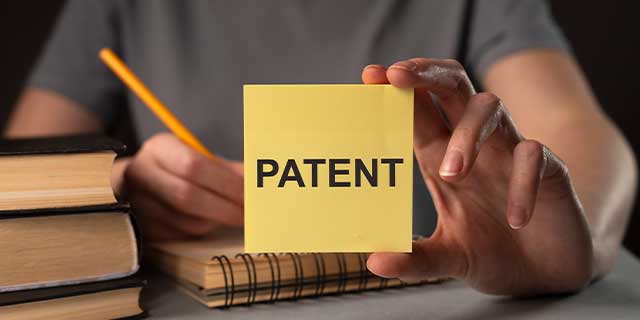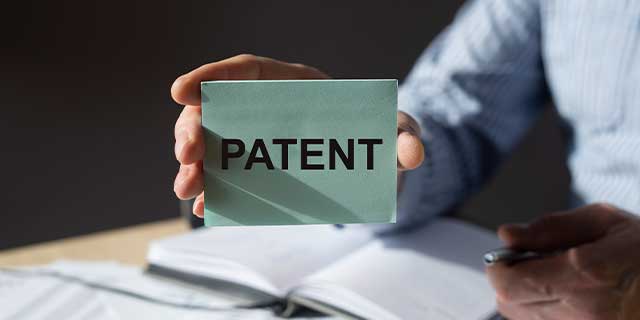
How to Write a Patent Application
Nowadays, people want to protect their inventions or ideas. Therefore, it is essential to get such an idea patent. However, you need to know how to write a patent application if you don’t want to hire a professional. Notably, writing a patent application is not as easy as you might think because it involves several processes.
If you are a new patent agent or patent attorney, it’s necessary to understand the processes required to draft a patent application. Writing a patent application is an important skill that is extremely useful for serious inventors. Whatever side you might be on, writing a patent application for that innovation or idea can be complicated. Let’s get started on the process of writing a professional patent application.
How to Write a Patent Application – Important Parts to Include
The process of writing a patent application isn’t easy. Although the concept describes the invention, it is not as straightforward as expected. Regrettably, there are certain things that patent writers neglect that automatically disqualify their applications. Let’s look at the process to write a patent application.
The Specification
The specification must align with the Patents Rules 192 and Patents Act 1992 requirements. It should be printed or typed on a single-sided A4 paper with the right margin. The margin must be blank, with each page numbered. Furthermore, you have to submit two copies of the specification.
The essence of the specification is to provide technical information about its legal definition and invention. It comprises four-component, which must be presented in the following order during the application process.
Title
The title is the first thing and must be brief. It indicates the issue relating to the invention. The title should remain the same on the specification and request form. The title must not contain more than 500 characters. Furthermore, the title shouldn’t contain words such as improvement, new, and improved. In addition, the first word for your title shouldn’t include “the”, “an”, and “a.”
Invention Description
The next important thing on how to write a patent application is the description of the invention. The description follows the title and must be a detailed explanation of the idea or invention. The description contains all the relevant information, which must be clear and completely understood.
Furthermore, it sets the invention background and explains what the invention tends to solve. After filing the patent application, you cannot add additional information or broaden the description. In addition, you cannot get a filing date without providing a detailed description of your information.
Claims
After the description of the invention comes the claims. It defines the invention scope and the patent’s legal protection when the application is granted. The claims should clearly define the reason for protecting the invention related to the technical features. Similarly, it should be concise, clear, and supported by the invention description.
The claims comprise dependent and independent claims. An independent claim defines the invention embodiment, which encompasses the essential features of the innovation. However, the dependent claims further explain embodiment characterized by desirable and non-essential components. The dependent claims rely on the independent claims, providing the primary invention.
Your claims should be confined to technical features and embodiments. You can also outline the benefits of the invention in the description area. Besides this, you can have independent claims in the specification in different categories. Nevertheless, all independent claims must be related to the main inventive concept. If you have several claims, it is essential to number them consecutively.
Drawing (If relevant)
It’s not composedly to have the drawing in your patent application. Nevertheless, it is important to know this when you want to learn how to write a patent application. It is always good to include a drawing as it provides clarity to your invention. Therefore, it can follow the specification.
It must be included in the description section in areas where you need them. There shouldn’t be any extraneous text. In addition, when filing, it must be included with the specification. Filing your drawing late has implications, which must be avoided at all costs.
Abstract
Besides the specification, you need to provide an abstract for your invention. The abstract is a summary of your invention. It must be typed and begin with the invention title in the specification and request form. The essential features must be included and shouldn’t exceed 150 words.
Tips to writing a Patent Application
Writing patents isn’t for the amateurs as it evolves. You need to hire a professional patent agent or attorney to get your patent drafted. It is advisable to do such rather than writing yourself. However, if you still want to know how to write a patent application, here are a few things that can help you during the process.
Hire a professional
We cannot state how important it is to hire a professional when writing your first patent. Prolific inventors and innovative thinkers are not good technical writers and might face many challenges. Therefore, working with a patent agent or attorney is a more straightforward approach as it would save you the stress and cost of getting your application rejected.
Perform a comprehensive art search
In certain situations, it might look hard to find all relevant prior art; it doesn’t mean you shouldn’t do a thorough search. This process is crucial to the application as it determines success or failure. You can use the semantic and Boolean search method to streamline your search to contain every possible input, including relevant terms and keywords. Besides this, you can also search for relevant inventors, categories, industries, etc.
Draft Wide-ranging Claims
An aberrant technology must have every component narrated in a claim to be eligible for any infringement or breach. Ensure to make any claim in your application comprehensive to make it hard for anyone that wants to steal your invention. In addition, avoid using any detail that doesn’t provide a relevant description of your claims in a broad sense. Doing that provides an avenue for your infringer to evade any infringement.
Ensure your specification and claims aligns
One mistake most patent application writers commit is not aligning their invention specifications with the claims. Each patent must contain a comprehensive specification with a technical description of making the invention and how it works. Ensure every feature in your claim and terms are included and clarified in the specification section.
Stack your claims
Here you have to act intelligent because the English language isn’t perfect in describing your claims. The words are subject to different interpretations. Therefore, it is preferable to get more claims. For instance, you can interpret an independent claim narrowly, making it easier for anyone to evade infringement. On the other hand, you can write it in a way that your competitors can’t come close.
Clarify everything
A valuable tip on how to write a patent application is ensuring everything is clear. Avoid any form of inconsistencies such as grammar and spelling, detail, and ambiguity. Minor spelling errors can have grievous consequences. Therefore, avoid becoming vulnerable to rejection or infringement due to grammar and spelling. The best option is to hire a professional to handle your patent application.
In addition, avoid any form of ambiguity. For instance, if your claim uses a personal pronoun, you should stick to it. When the information is too little or much, it hinders the project’s main concept. This makes it hard for your readers to understand the application. Therefore, get directly to the problem, set the solution, and outline the innovation points.
Conclusion
The steps on how to write a patent application aren’t complicated as you might think. Anyone can write a patent application, but you need someone with the skills to craft it. Patent applications take time, and it is advisable to hire a professional patent agent or attorney to draft a good patent.
The article has provided a preview of what a good patent application should look like, including items you shouldn’t add to it. You have to secure your invention, and writing a patent application is the first step to achieving it.



